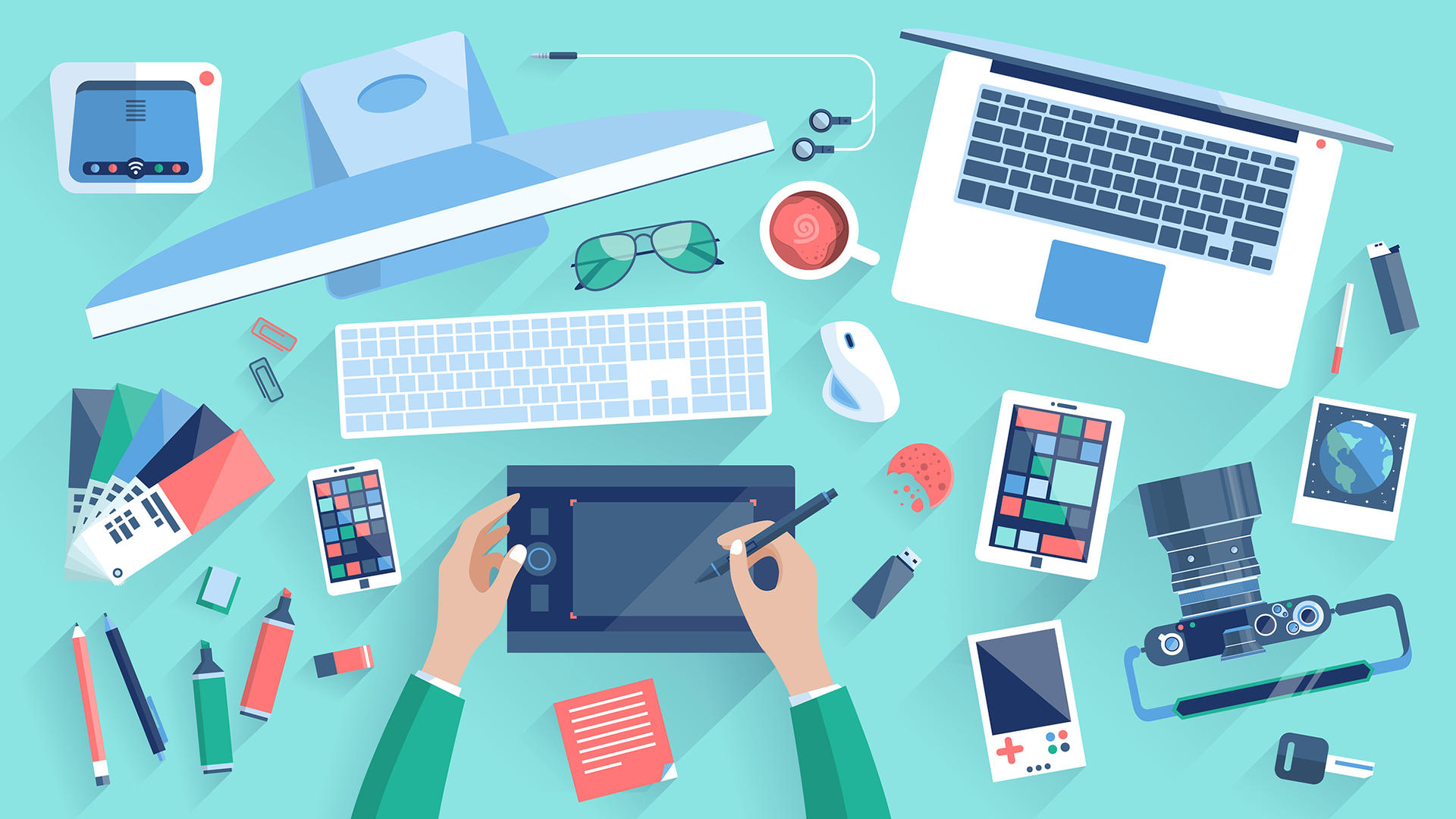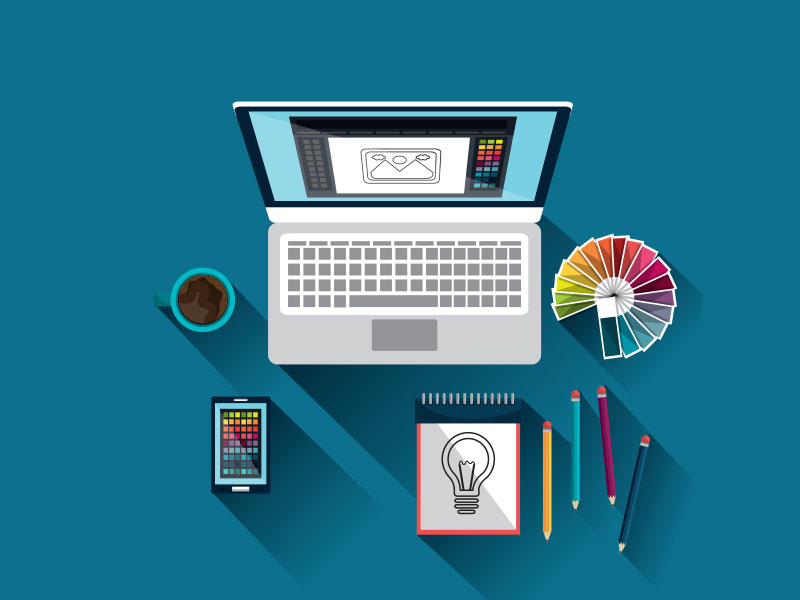Intersection of Graphic and Web Design: Crafting Visual Experiences in the Digital Age
In the rapidly evolving digital world, the lines between graphic design and web design are increasingly blurred. Both fields play crucial roles in creating engaging, visually appealing, and functional experiences for users. While graphic design focuses on visual communication and aesthetics, web design combines these elements with functionality and interactivity. This article explores the interplay between graphic and web design, highlighting their distinct features, common goals, and how they complement each other to craft compelling digital experiences.
Understanding Graphic Design
What is Graphic Design?
Graphic design is the art of visual communication through the use of typography, imagery, colour, and layout. It aims to convey a message or evoke a specific emotion through visual elements. Graphic design encompasses various mediums, including print materials (brochures, posters, magazines), digital media (websites, social media graphics), and branding (logos, packaging).
Core Principles of Graphic Design
- Balance: Ensures that visual elements are evenly distributed to create a sense of harmony.
- Contrast: Highlights differences in colour, size, and shape to make important elements stand out.
- Alignment: Organizes elements about each other and the overall layout, ensuring coherence.
- Repetition: Uses recurring design elements to create unity and consistency.
- Proximity: Groups related elements together to establish visual relationships.
Graphic Design Tools and Techniques
Graphic designers use a variety of tools and techniques to create their designs. Popular software includes Adobe Creative Suite (Photoshop, Illustrator, InDesign), Sketch, and Canva. Techniques such as vector illustration, image manipulation, and typography play essential roles in crafting effective designs.
Exploring Web Design
What is Web Design?
Web design focuses on creating the visual layout and user experience of websites. It involves designing the structure, appearance, and interactivity of web pages to ensure they are functional, aesthetically pleasing, and user-friendly. Web design incorporates elements of graphic design but extends to include user interface (UI) and user experience (UX) design.
Core Principles of Web Design
- User-Centered Design: Prioritizes the needs and preferences of the target audience.
- Responsiveness: Ensures that websites function well on various devices and screen sizes.
- Navigation: Creates intuitive and easy-to-use navigation systems to guide users through the site.
- Load Speed: Optimizes website performance to ensure fast loading times.
- Accessibility: Design websites that are usable by people with disabilities, adhering to guidelines such as the Web Content Accessibility Guidelines (WCAG).
Web Design Tools and Techniques
Web designers use tools like Adobe XD, Figma, and Webflow for designing and prototyping websites. Techniques include wireframing, responsive design, and usability testing to ensure that websites meet user needs and perform well across different devices.

The Intersection of Graphic and Web Design
Visual Consistency
Graphic and web design share the goal of creating visually appealing content. Consistency in visual elements such as colour schemes, typography, and imagery helps reinforce brand identity and ensures a cohesive user experience. For example, a brand’s logo and colour palette should be consistently applied across both print and digital platforms.
User Experience (UX) and User Interface (UI)
Graphic design contributes to the visual aspects of UI design, including icons, buttons, and layout. Web design, on the other hand, focuses on the functionality and usability of these elements. A successful website combines aesthetically pleasing graphics with intuitive UI design to create an engaging user experience.
Responsive Design
Graphic design principles must adapt to the constraints and opportunities of web design. For instance, graphic elements must be optimized for various screen sizes and resolutions. Responsive web design techniques ensure that graphics and layouts adjust seamlessly across devices, maintaining visual integrity and usability.
Best Practices for Integrating Graphic and Web Design
1. Establish Clear Goals and Objectives
Before starting a design project, define the goals and objectives. Understanding the purpose of the design—whether it’s for a print ad, a website, or a social media campaign—helps guide the design process and ensures that both graphic and web design elements work harmoniously toward a common goal.
2. Create a Design System
A design system is a collection of reusable design components and guidelines that ensure consistency across various platforms. This system includes elements such as colour palettes, typography, and UI components. By creating a design system, you streamline the process of integrating graphic and web design, maintaining visual consistency and efficiency.
3. Focus on User Experience
Whether designing for print or digital media, always prioritize the user experience. In web design, this means ensuring that websites are easy to navigate and perform well on different devices. In graphic design, it involves creating visually engaging materials that effectively communicate the intended message. User feedback and usability testing are valuable tools for refining both graphic and web design.
4. Optimize for Performance
In web design, optimizing graphics for performance is crucial. Large image files can slow down page load times, negatively impacting user experience. Use techniques such as image compression, lazy loading, and responsive images to enhance performance while preserving visual quality.
5. Stay Updated with Trends and Technologies
Both graphic and web design are dynamic fields influenced by trends and technological advancements. Stay informed about the latest design trends, tools, and best practices to keep your designs fresh and relevant. This includes understanding emerging technologies such as artificial intelligence, virtual reality, and interactive media.
Improve Your Online Presence with Professional Consulting and Coaching Services
Case Studies
Case Study 1: Nike’s Integrated Design Approach
Nike exemplifies the seamless integration of graphic and web design. Their brand identity is consistently reflected across various platforms, from print advertisements to their website and mobile app. Nike’s use of bold typography, striking imagery, and cohesive colour schemes creates a unified and impactful user experience.
Case Study 2: Airbnb’s User-Centric Web Design
Airbnb’s website showcases effective web design practices, with a focus on user experience and visual appeal. The site features a clean, intuitive interface, high-quality images, and clear typography. The integration of graphic design elements, such as icons and buttons, enhances usability and supports the overall brand identity.

Future Trends
1. Increased Use of Animation and Motion Design
Animation and motion design are becoming integral to both graphic and web design. These elements can enhance user engagement, create dynamic visuals, and provide feedback. As technology advances, expect to see more sophisticated animations and interactive elements in digital design.
2. Emphasis on Personalization and Customization
Personalization and customization are key trends in web design. Tailoring content and design elements to individual user preferences can enhance engagement and satisfaction. Graphic design also plays a role in creating personalized visual experiences through custom graphics and imagery.
3. Integration of Augmented Reality (AR) and Virtual Reality (VR)
AR and VR technologies are opening new possibilities for graphic and web design. These immersive technologies allow designers to create interactive and engaging experiences that blend the digital and physical worlds. From virtual showrooms to interactive brand experiences, AR and VR are set to revolutionize the design landscape.
Shop the Best Selection of Products at Our Niche Online Store
Graphic and web design are closely intertwined disciplines that together shape the visual and functional aspects of our digital experiences. By understanding the principles and best practices of each field, designers can create compelling, cohesive, and user-centred designs that resonate with audiences. As technology continues to evolve, the integration of graphic and web design will remain essential in crafting innovative and effective visual communications.





Post Comment